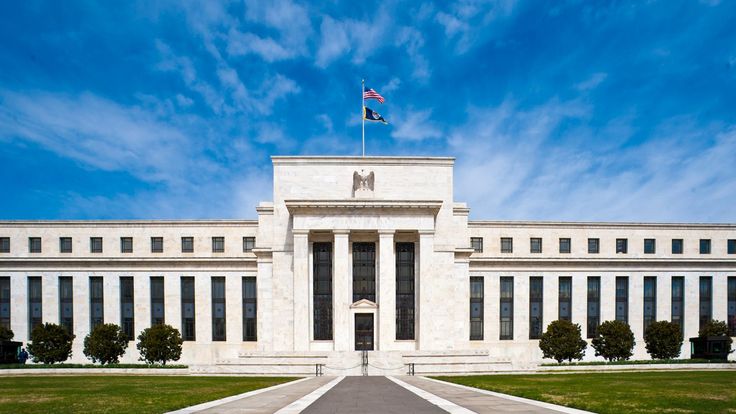The global financial world holds its breath for every utterance from the Federal Reserve, and for good reason. The central bank’s decisions on interest rates act as the command center for the U.S. economy, sending powerful ripple effects across global markets, influencing everything from corporate investment and stock valuations to the monthly payments on a family’s mortgage. For much of the past few years, the dominant narrative has been one of aggressive rate hikes to combat surging inflation. However, the latest economic data has introduced a dramatic plot twist, forcing the Fed into a complex and delicate balancing act.
In a move that surprised some market participants, the Federal Reserve recently enacted a modest rate cut, signaling a shift in its immediate priorities from fighting inflation to supporting a potentially weakening labor market. This decision highlights a crucial reality for every investor, business owner, and consumer: the path of interest rates is never a straight line. It is a constant, data-dependent dance between stimulating growth and taming inflation.
This article will serve as a comprehensive guide to understanding the intricate world of Federal Reserve monetary policy. We will move beyond the headlines to explore the fundamental reasons behind rate adjustments, dissect the profound impact these changes have on every corner of the economy, and analyze the current, complex landscape. Understanding this dynamic is not just an academic exercise; it is essential for making informed financial decisions in an environment where the only certainty is continued uncertainty.
The Core Mission: Decoding the Fed’s Dual Mandate
Before one can understand why the Fed raises or lowers interest rates, it’s critical to understand its congressionally mandated objectives. The central bank operates under a “dual mandate,” a twofold mission that guides all its policy decisions:
A. Maximum Employment: The Fed is tasked with fostering economic conditions that allow for as many Americans as possible to be employed. This involves promoting a strong, stable job market where unemployment is low.
B. Price Stability: The second, equally important goal is to keep inflation in check. The Fed has identified a target inflation rate of 2% per year as the most consistent with long-term price stability. This prevents the rapid erosion of purchasing power that high inflation causes while avoiding the damaging economic effects of deflation (falling prices).
The inherent tension between these two goals is the central drama of monetary policy. Actions taken to boost employment (like lowering interest rates to encourage borrowing and spending) can sometimes fuel inflation. Conversely, measures to curb inflation (like raising interest rates to slow the economy) can risk increasing unemployment. The Fed’s challenge is to navigate this trade-off based on the latest economic data.
The Primary Tool: How the Federal Funds Rate Shapes the Economy
The Fed’s main lever for achieving its dual mandate is the federal funds rate. This isn’t a rate that consumers pay directly. Instead, it is the target interest rate at which commercial banks borrow and lend their excess reserves to each other on an overnight basis.
While it’s an interbank rate, a change in the federal funds rate sets off a powerful chain reaction:
- Prime Rate: Banks immediately pass on this change to their own best customers in the form of the prime rate.
- Consumer and Business Loans: The prime rate serves as the foundation for a vast array of other lending products. When the federal funds rate changes, so do the rates on credit cards, adjustable-rate mortgages (ARMs), auto loans, and corporate credit lines.
- Economic Activity: By making borrowing cheaper or more expensive, the Fed can influence the overall level of spending and investment in the economy, thereby steering it toward its employment and inflation goals.
The Signals for a Shift: Why the Fed Acts
The Federal Open Market Committee (FOMC), the body within the Fed that sets interest rate policy, meets eight times a year to analyze a vast dashboard of economic indicators. Their decisions are never based on a single number but on the totality of the data.
A. Inflation Metrics: The most closely watched indicators are the Consumer Price Index (CPI) and the Personal Consumption Expenditures (PCE) price index. These reports measure the average change over time in the prices paid by urban consumers for a basket of consumer goods and services. When these numbers are persistently above the 2% target, it creates pressure for the Fed to raise rates.
B. Labor Market Data: The monthly Jobs Report is paramount. The Fed looks at the headline unemployment rate, the number of jobs created (nonfarm payrolls), and the rate of wage growth. Strong job growth and rising wages are positive for the “maximum employment” mandate but can also be inflationary, creating a policy dilemma. The recent rate cut was largely a response to signs that job gains were slowing, indicating a potential weakening in the labor market.
C. Gross Domestic Product (GDP): This is the broadest measure of economic health, tracking the total value of goods and services produced. A strong GDP reading suggests the economy can withstand higher interest rates, while a weak or negative reading may call for a rate cut to stimulate growth.
D. Consumer Spending and Confidence: Since consumer spending is a massive driver of the U.S. economy, the Fed pays close attention to retail sales data and consumer confidence surveys. Confident consumers who are spending freely can signal economic strength, while a pullback in spending can be a harbinger of a slowdown.
The Ripple Effect: How Rate Changes Impact You

A decision made in the Fed’s boardroom in Washington D.C. quickly translates into real-world financial consequences for households and businesses.
A. The Impact on Consumers and Borrowers When the Fed raises interest rates, borrowing becomes more expensive. The interest rates on credit card balances, which are typically variable, will rise almost immediately. The cost of new auto loans and mortgages will also increase, potentially cooling demand in the housing and automotive markets. Conversely, a rate cut, like the one recently implemented, provides relief for borrowers and can stimulate spending on big-ticket items. For savers, the environment is reversed. Higher rates mean better yields on savings accounts, money market accounts, and certificates of deposit (CDs), while lower rates mean earning less on cash reserves.
B. The Impact on the Stock Market The stock market’s reaction to interest rate changes is complex and varies by sector.
- Growth Stocks: Higher rates tend to hurt growth-oriented sectors like technology. These companies’ valuations are often based on the promise of future earnings. When rates rise, the discount rate used to calculate the present value of those future earnings also rises, making the stock look less valuable today.
- Value and Dividend Stocks: Companies in more stable, mature industries (like utilities and consumer staples) may perform better, as their reliable dividends become more attractive compared to bond yields.
- Financials: The banking sector often benefits from rising rates. Banks can earn a larger spread between the interest they pay on deposits and the interest they charge on loans, boosting their profitability.
C. The Impact on the Bond Market The relationship between interest rates and the bond market is direct and inverse. When the Fed raises interest rates, newly issued bonds will offer higher yields to be competitive. This makes existing bonds with lower yields less attractive, causing their market price to fall. Conversely, when rates fall, existing bonds with higher yields become more valuable, and their prices rise.
The Current Economic Puzzle

The Fed’s recent decision to cut rates, even with inflation still above its 2% target, perfectly illustrates the difficult balancing act it faces. The central bank is weighing the risk of a slowing job market more heavily than the risk of persistent, though moderating, inflation. This creates a challenging environment for investors to navigate. It signals that the Fed is willing to tolerate slightly higher inflation to protect economic growth and employment, a significant shift from the inflation-first mindset of the past couple of years.
This environment favors adaptability and a focus on quality. Businesses with strong balance sheets and consistent cash flow are better positioned to weather economic uncertainty. For investors, it underscores the importance of a diversified portfolio that can perform in various economic scenarios, rather than making large bets on a single outcome. The road ahead will be determined by the incoming data—each new inflation report and jobs number will be intensely scrutinized for clues about the Fed’s next move in this ongoing economic dance.












